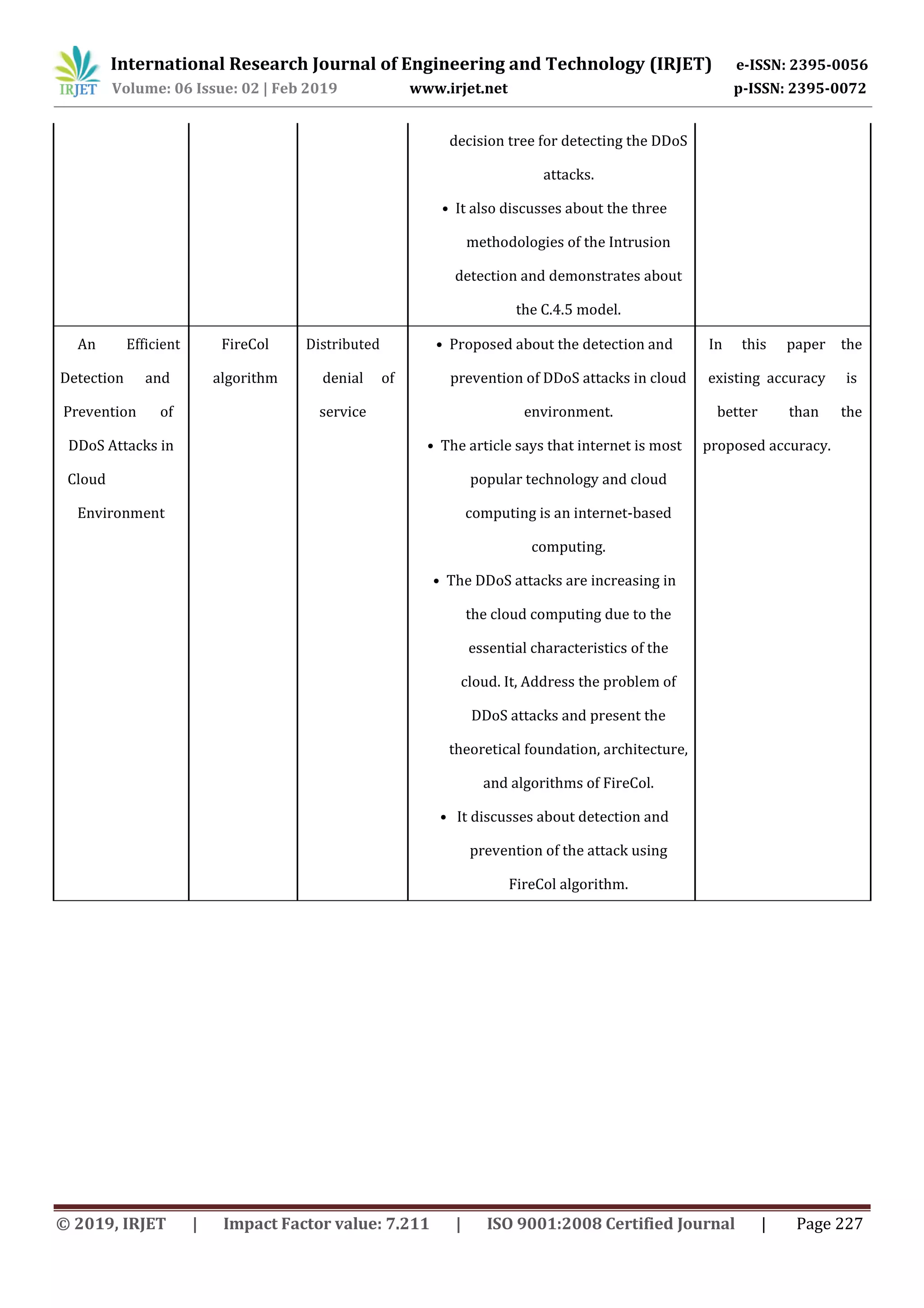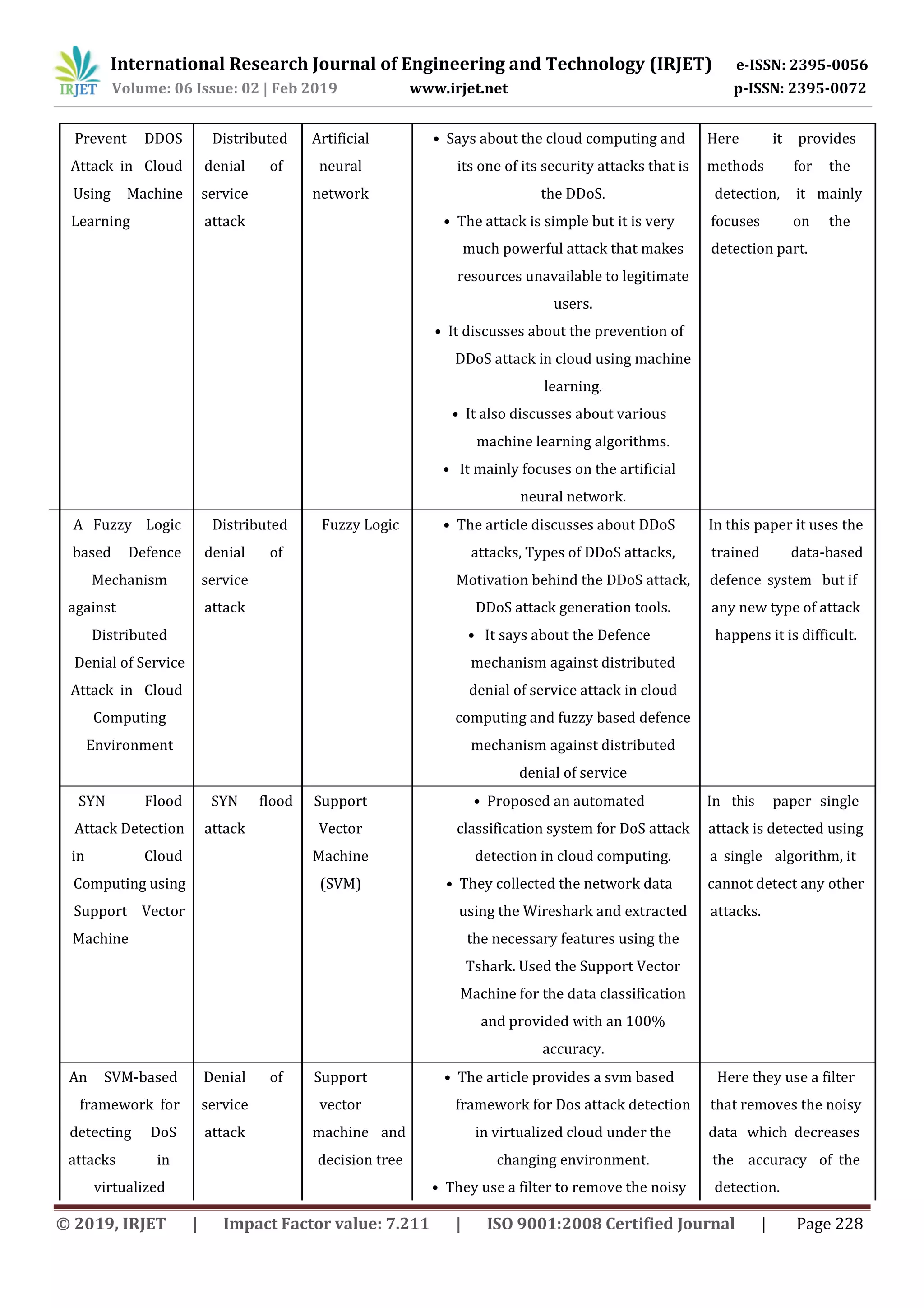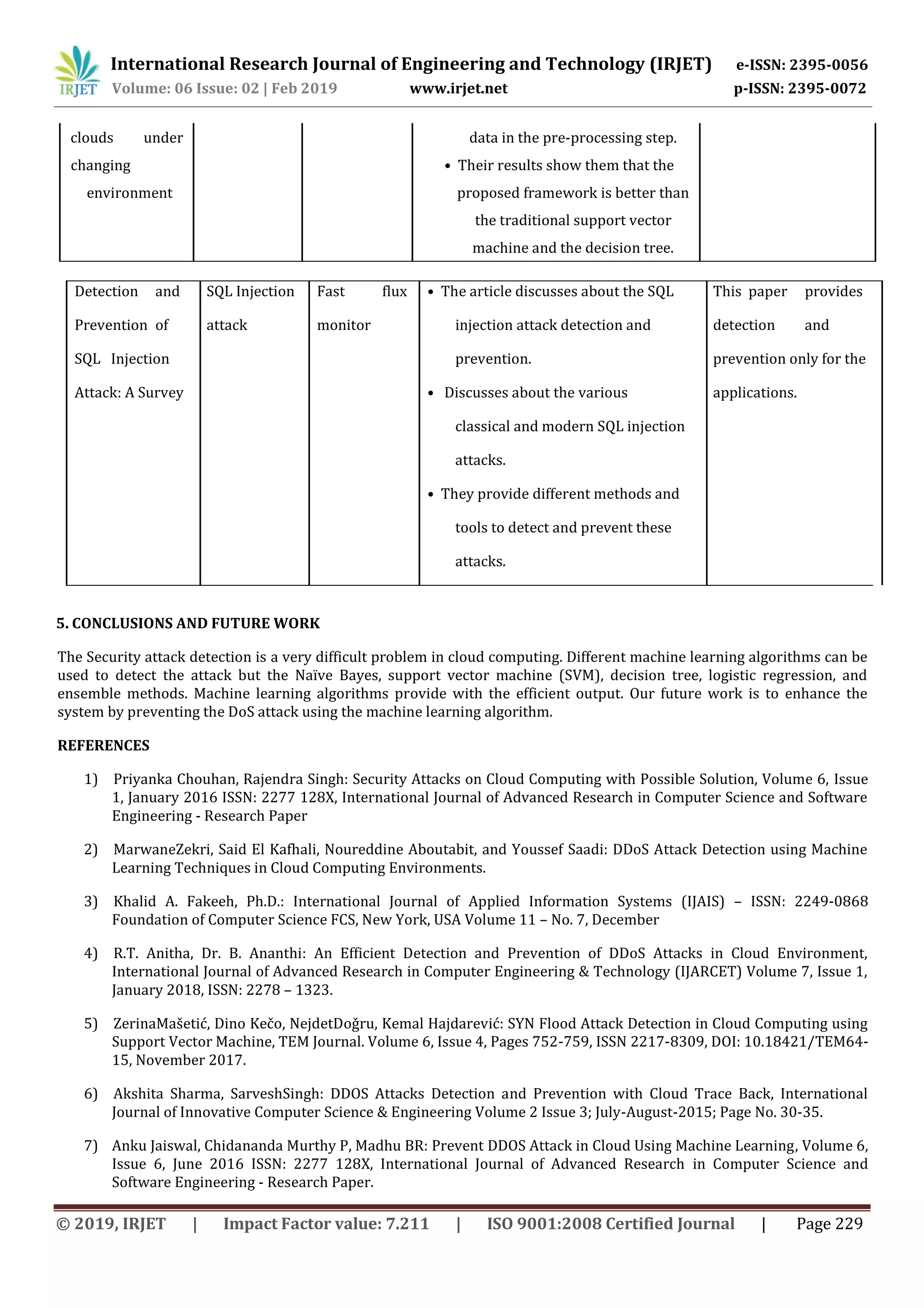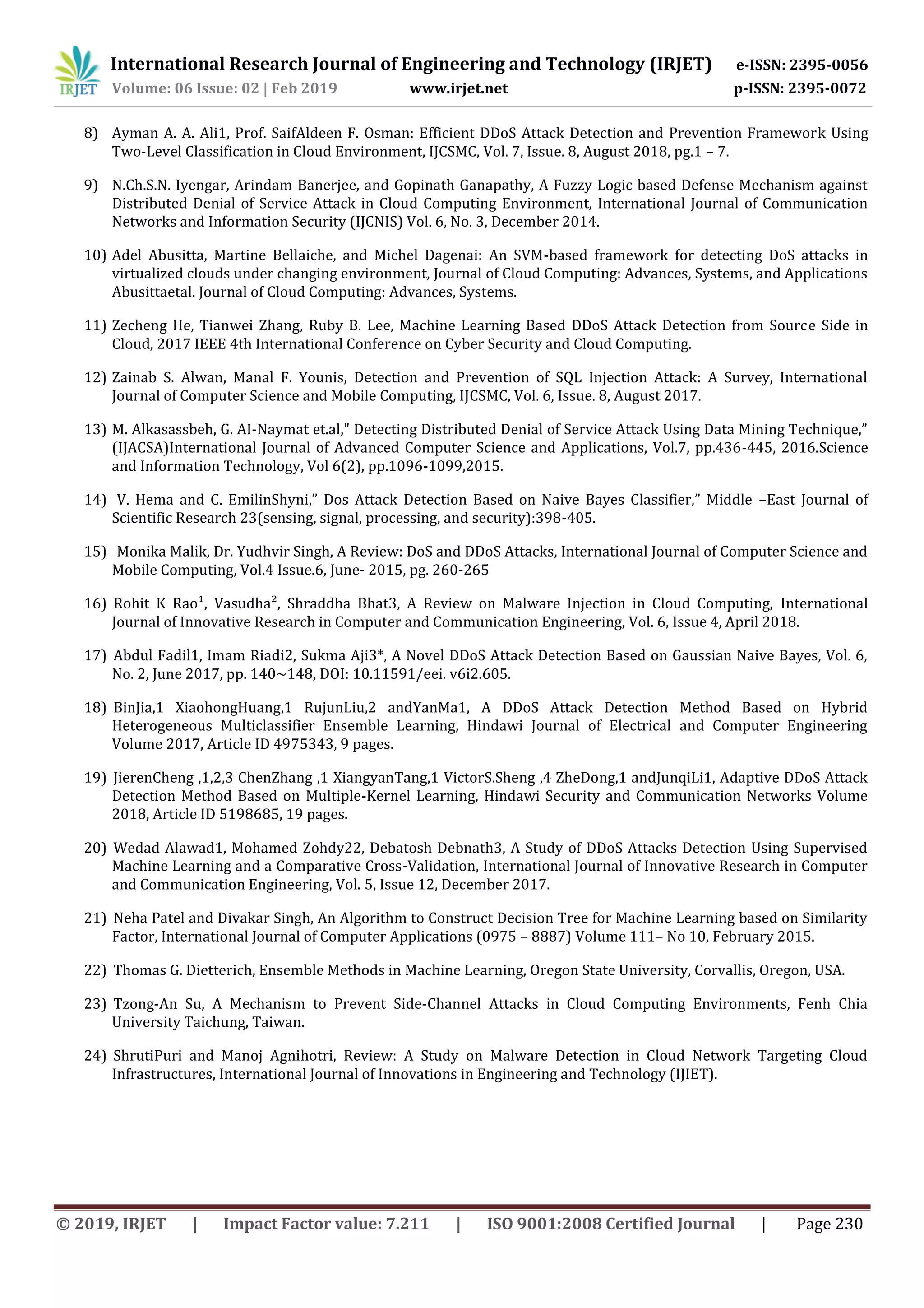This document discusses using machine learning algorithms to detect security attacks in cloud computing. It first describes common security attacks like denial of service attacks, malware injection, side channel attacks, and man-in-the-middle attacks. It then discusses machine learning classification algorithms like naive Bayes, support vector machines, decision trees, and ensemble methods that can be used to detect these attacks. Specifically, it explores using naive Bayes and hidden naive Bayes classifiers to detect denial of service attacks and assess their accuracy compared to other algorithms like multilayer perceptron and random forest.
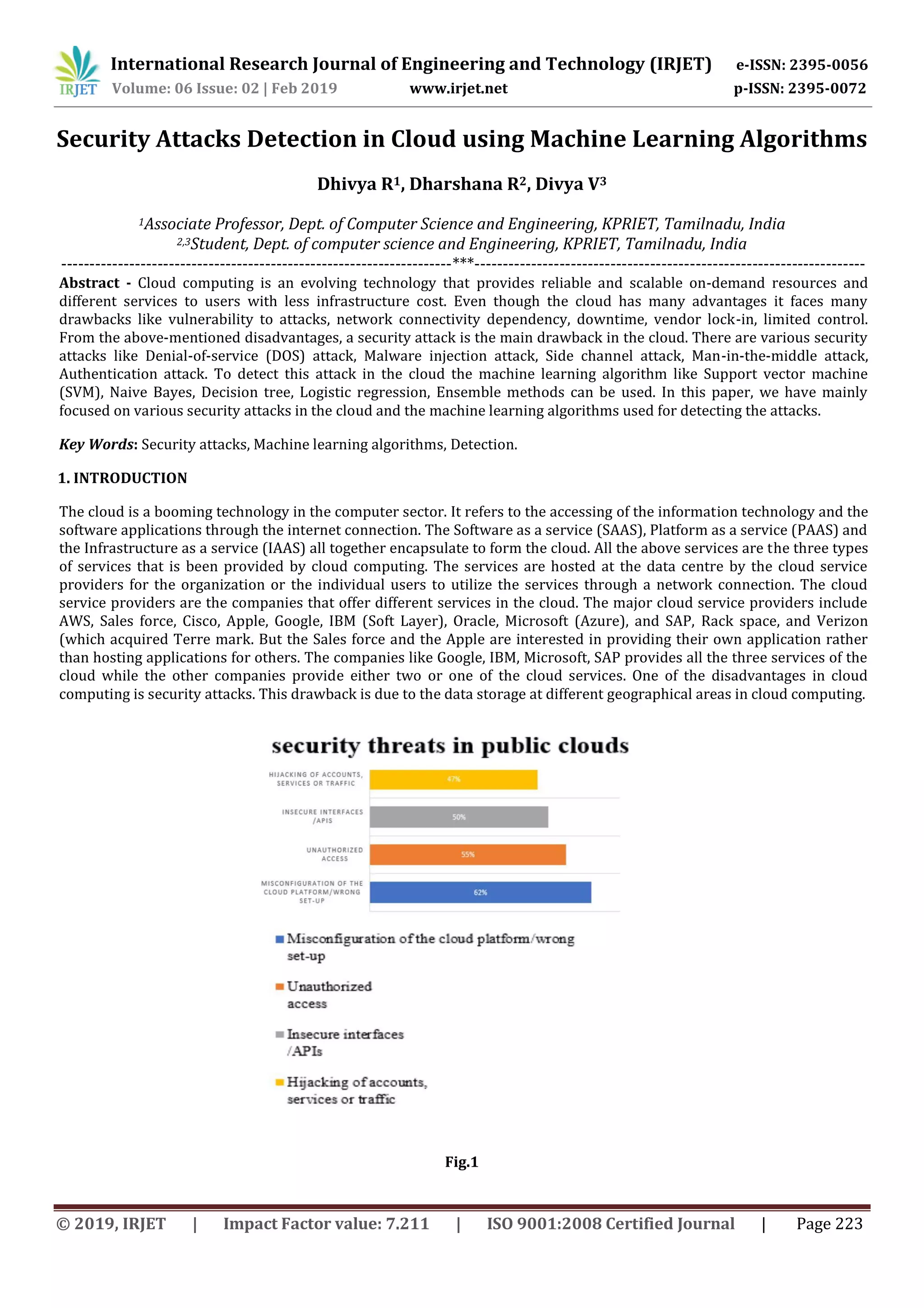
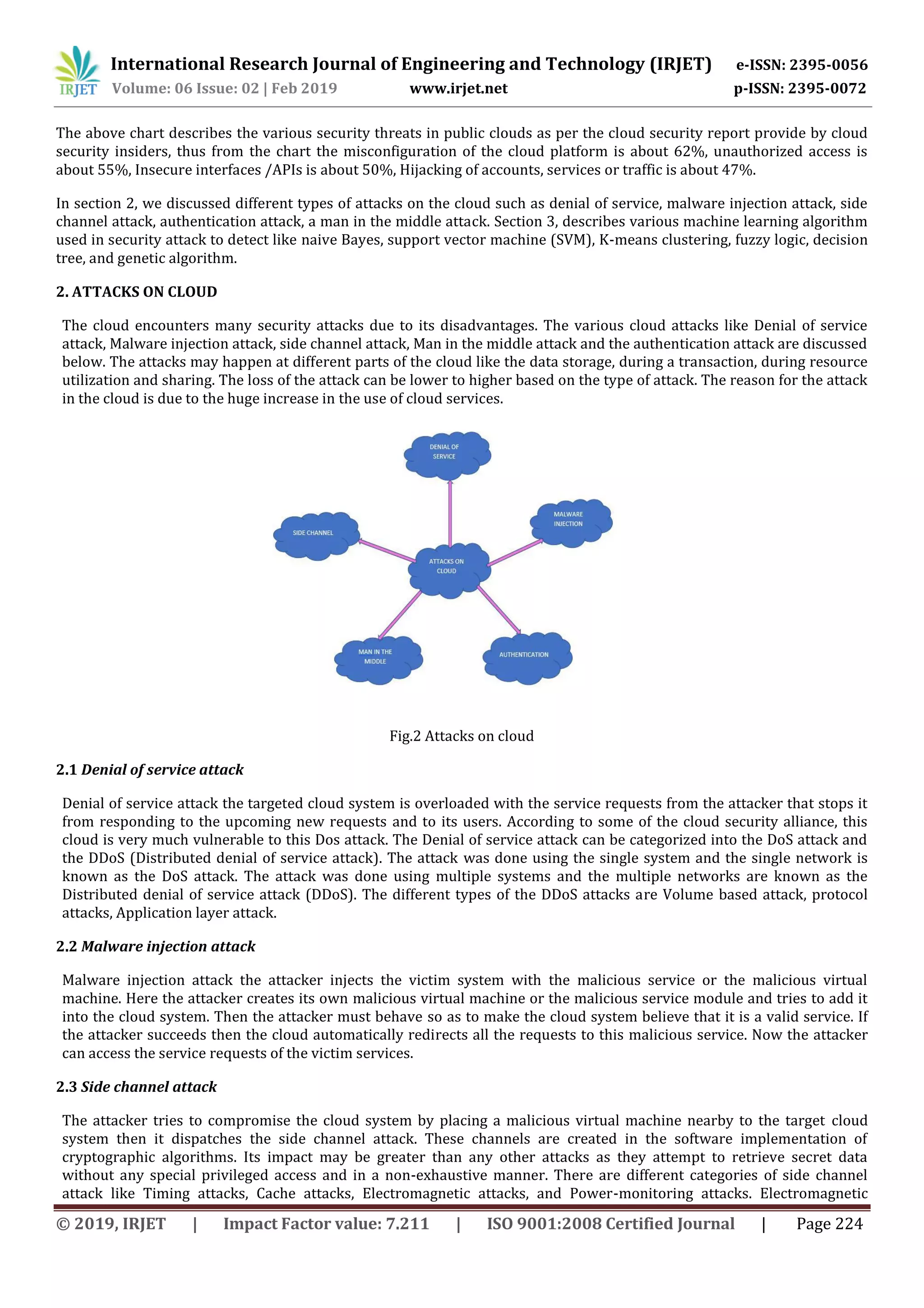
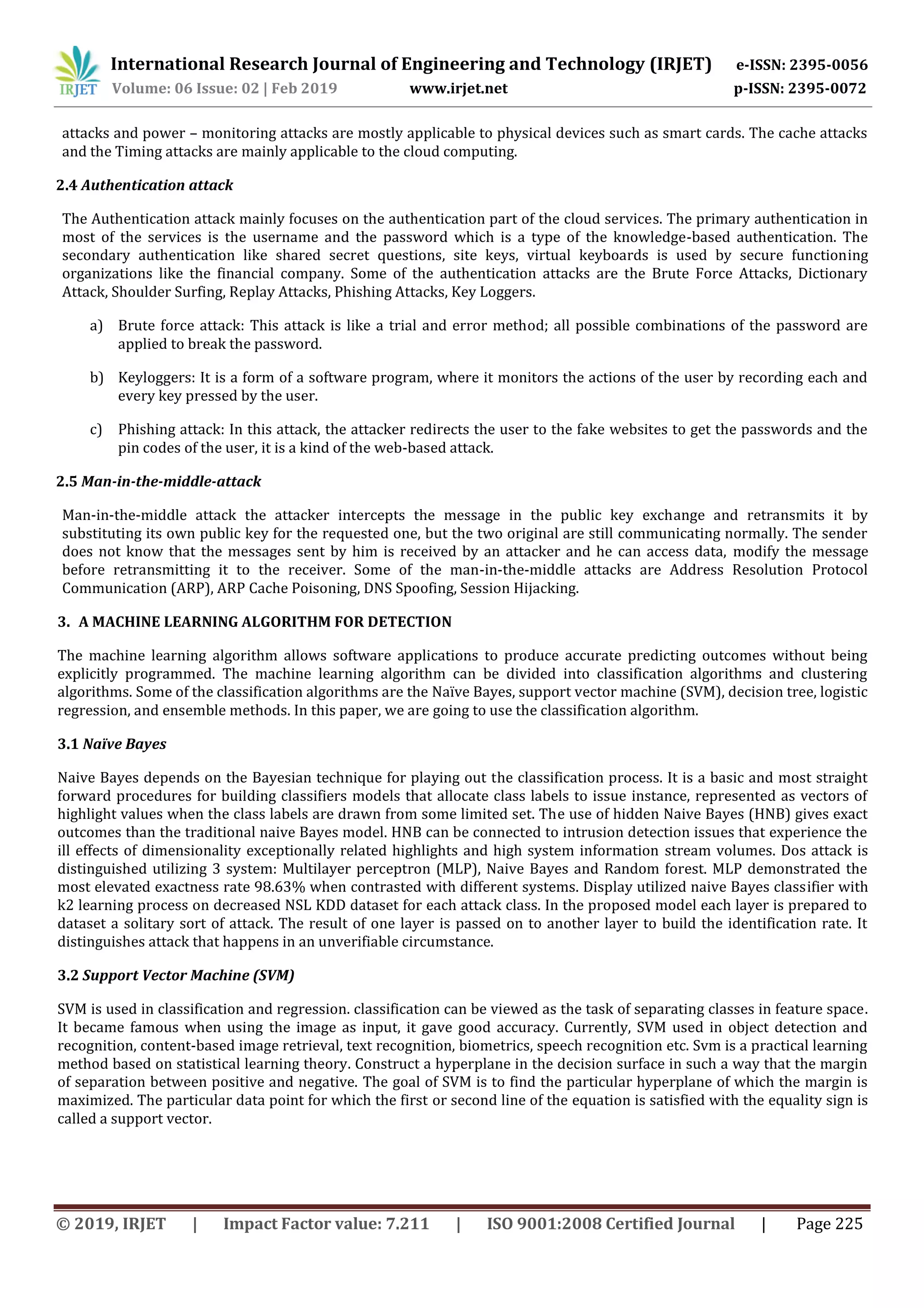
![International Research Journal of Engineering and Technology (IRJET) e-ISSN: 2395-0056 Volume: 06 Issue: 02 | Feb 2019 www.irjet.net p-ISSN: 2395-0072 © 2019, IRJET | Impact Factor value: 7.211 | ISO 9001:2008 Certified Journal | Page 226 3.3 Decision Tree The decision tree algorithm is a kind of the classification-based machine learning algorithm. A decision tree is a flow-chart- like hierarchical tree structure which is composed of three basic elements: decision nodes corresponding to attributes, edges or branches which correspond to the different possible attribute values. The third component is leaves including objects that typically belong to the same class or that are very similar. Tree induction algorithms like Id3 and C4,5 create decision trees, it takes only one attribute at a time. The decision tree nodes are created by choosing an attribute from the feature space of the dataset that brings maximum information gain by splitting the data on its distinct value. After the split, the information gain is calculated as the difference between the entropy of the initial dataset and the sum of the entropies of each of the subsets. 3.4 Logistic Regression The logistic regression is the commonly used tool for discrete data analysis. It uses an equation as the representation. Logistic regression is used for predicting the probabilities of the various classes does an analysis and give a group of independent variables. It makes use of a linear equation with independent predictors for predicting a value. The predicted value can be anywhere from negative infinity to positive infinity of the system. We can squash the output of the linear equation into a range of [0,1]. For squashing the predicted value from 0 to 1, we make use of the sigmoid function. It provides a solution for the classification problem that assumes that a linear combination of the observed features can be used to determine the probability of each particular outcome of the dependent variable. 3.5 Ensemble Method Ensemble methods is a learning algorithm that constructs a group of classifiers and then by using the weighted vote of their predictions we classify new data points. The original ensemble method is Bayesian averaging but recent algorithms include error-correcting output coding Bagging and boosting. The various types of ensemble methods are Bootstrap AGGregating, Random Forest Models. 1. Bootstrap AGGregating BAGGing name is given because it combines Bootstrapping and Aggregation to form one ensemble model. When a sample of data is given, many bootstrapped subsamples are taken from the sample. In each bootstrapped samples a decision tree is formed. After decision tree subsamples are formed, an algorithm is used to aggregate over the Decision Trees to form the most efficient predictor. 2. Random Forest Models Random Forest models will implement differentiation levels because based on different features each tree is splitted. This differentiation levels provides a greater ensemble to aggregate over, ergo producing a more accurate predictor. 4. THE VARIOUS SECURITY ATTACKS DETECTION IN CLOUD BY OTHER AUTHORS ARE STUDIED BELOW Paper Title Algorithm Security Advantages Limitations used attack DDoS Attack C4.5 Denial of • The article discusses about the The C4.5 algorithm Detection using algorithm service objective of the Denial-of service alone cannot detect the Machine and decision attack attack and had proposed an DDoS DDoS attack, it must be Learning tree model using the C.4.5 algorithm to coupled with the Techniques in mitigate the DDoS threat. Signature detection Cloud • In this the algorithm is coupled technique. Computing with the signature detection Environments techniques that generates the](https://image.slidesharecdn.com/irjet-v6i246-190309081723/75/IRJET-Security-Attacks-Detection-in-Cloud-using-Machine-Learning-Algorithms-4-2048.jpg)
